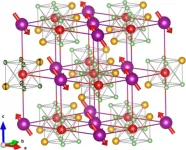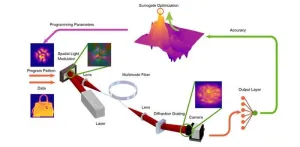Fusion energy is being developed as a solution to global energy problems. In particular, the magnetic confinement method, in which ultra-high temperature plasma is confined by a magnetic field, is the most advanced and is considered to be the most promising method for fusion reactors. By this method, the plasma is confined in the reactor in a high-temperature, high-density state by a magnetic field, and the energy released by the fusion reaction in the plasma is converted into electricity. To realize this power generation method, it is essential to predict and control the complex behavior of fusion plasma. One possible control method is digital twin control, in which the fusion plasma is controlled based on the plasma reproduced in numerical space (digital twin, see IMAGE). However, it is difficult to predict and analyze the plasma behavior with high accuracy using simulation models because the model must consider not only complex plasma flow, but also many other factors such as heating, fuel supply, impurities, and neutral particles. In addition, future fusion reactors will have limited measurement capabilities, which forces predictive control and plasma-state estimation under conditions of great uncertainty and lack of information. A research group led by Assistant Professor Yuya Morishita, Professor Sadayoshi Murakami of the Graduate School of Engineering, Kyoto University, Japan, Assistant Professor Naoki Kenmochi, Assistant Professor Hisamichi Funaba, Professor Masayuki Yokoyama, Professor Masaki Osakabe of the National Institute for Fusion Science (NIFS), National Institutes of Natural Sciences (NINS), Japan, and Professor Genta Ueno of the Institute of Statistical Mathematics (ISM), Japan, and the Joint Support-Center for Data Science Research (RIOS-DS), Japan, has developed a new control system that can optimize the predictive model using real-time observations and estimate the optimal control based on the improved predictive model even under such highly uncertain conditions.
A mathematical method called data assimilation is a technique that uses observed information to reduce the differences between numerical simulations and reality. Data assimilation is used to improve the prediction and analysis performance of large-scale simulation models (e.g., weather forecasting). We have developed ASTI (Assimilation System for Toroidal plasma Integrated simulation) as a data assimilation system for fusion plasmas. In general, data assimilation is a technique to improve the accuracy of prediction and analysis. In this research, we have added control functions to the data assimilation framework and created a system that can perform digital twin control of fusion plasmas. This data assimilation-based control method adapts the simulation model to the actual behavior of the fusion plasma in real time, allowing the plasma behavior to be predicted with high accuracy and further controlled, based on the predictions. Within ASTI, a large number of simulations with different states are performed in parallel to predict the future state of the plasma probabilistically. By reflecting (assimilating) observations and target states in this predicted probability distribution, the adaptation to the real plasma and the control estimation are performed.
ASTI was applied to the Large Helical Device (LHD), the world's most advanced superconducting plasma experimental facility, which is equipped with many control knobs including a high-power electron cyclotron resonance heating (ECH) device and advanced measurement equipment including real-time Thomson scattering measurement system. We conducted an experiment to control the electron temperature of the actual plasma by ECH, while optimizing the predictive model based on the electron density and temperature profiles observed in real time. As a result, the electron temperature was brought close to the target temperature while improving the prediction accuracy of the model, and the world's first demonstration of predictive control of a fusion plasma by a digital twin, based on data assimilation, was successfully achieved. This new control approach is expected to become fundamental to fusion reactor control because it can be applied to important but challenging control problems, including the control of plasma density and temperature profiles and the control of quantities that are not directly measured, such as the ease of heat escape from inside the plasma. These results have been published in a journal of the Nature publishing group, Scientific Reports.
The control system developed in this study lays the foundation for the control of fusion reactors, where various components must be considered simultaneously. Although this control experiment is a starting point for digital twin control of fusion plasmas, it is a significant step toward the advanced controls that are essential for the realization of fusion power generation, such as plasma profile control and avoidance of sudden disappearance phenomena. In the future, we plan to expand the control system and conduct demonstration experiments for more advanced control problems at the LHD and other experimental devices in Japan and abroad.
This data assimilation-based control approach provides the basis for adaptive predictive control in situations where it is difficult to predict with high accuracy by simulation alone. Therefore, this approach is expected to solve not only control problems of fusion plasma, but also other societal issues involving many uncertain factors, such as road traffic control and river water level control.
Assistant Professor Morishita said, “I believe that this research is challenging but important in the realization of fusion power generation. It was also a good opportunity for me, who specializes in numerical model calculations, to experience fusion plasma experiments for the first time and to realize the difference between reality and simulation. In the future, I would like to establish this control system as a control foundation for fusion reactors.”
END







